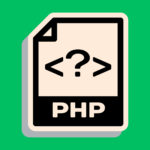PHP CRUD (Create, Read, Update, Delete) generators are tools that allow developers to quickly generate PHP code for basic CRUD operations for a database table. CRUD functionality forms the foundation for the majority of web applications, as most apps need to perform basic data manipulation tasks. By using a CRUD generator, developers can save significant time and effort compared to writing all the CRUD code manually.
In this article, we will explore what PHP CRUD generators are, why they are useful, how to use them, and some of the most popular options available.
What is a PHP CRUD Generator?
A PHP CRUD generator is a tool that takes a database table schema as input and produces PHP code to perform create, read, update and delete operations for that table. The generated PHP code provides a basic ready-made CRUD system for manipulating and managing data in the specified table, with functions for operations like:
- Displaying all table records
- Displaying a single record by ID
- Adding a new record
- Updating an existing record
- Deleting a record
The CRUD generator does the grunt work of writing all the PHP code needed to connect to the database, run SQL queries, handle user input, validate data, etc. Developers just need to feed it their database schema, do some minor configuration, and they get a complete CRUD system in PHP for that table.
Why Use a PHP CRUD Generator?
There are several advantages to using a CRUD generator for PHP instead of writing all the CRUD functionality manually:
- Saves time: CRUD generators can create all the basic CRUD code for a table in seconds. Doing this manually could take hours.
- Avoid repetitive code: CRUD logic involves a lot of repetitive code for connecting to databases, running queries, etc. Generators condense this down to clean reusable code.
- Consistent code: Manually written CRUD operations often have inconsistencies. Generated code is standardized.
- Focus on business logic: Developers don’t have to worry about the CRUD boilerplate and can focus on business rules.
- Prototype faster: CRUD generation makes it easy to whip up quick prototypes and proofs-of-concept.
- Clean architecture: Generated CRUD code follows the separation of concerns principle, isolating data access logic.
- Customizable: Most generators allow customization of the auto-generated code as needed.
While CRUD generators can speed development, they are not a replacement for hand-coded business logic and customization. They just remove the drudgery of common repetitive tasks.
How to Use a PHP CRUD Generator
PHP CRUD generators are quite easy to use. The basic steps are:
- Install the generator: Use Composer or download the generator code. Some popular options are CrudKit, php-crud-api, and Quick CRUD.
- Create the database schema: Have your database table schema ready, usually in SQL format. The generator will read the schema to determine fields, data types, relationships, etc.
- Configure generator settings: Most generators will have some basic configuration like connecting to the database, table prefix, etc.
- Run the generator: Run the generator command line utility or web interface and point it to your schema. This will generate the PHP CRUD code.

- Integrate code: Take the generated PHP code and integrate it into your application codebase. The generator may provide a class you can extend.
- Customize: Tweak the auto-generated code as needed to match your requirements, add business logic, etc. Re-generate after making schema changes.
- Use generated CRUD functions: Call the generated PHP functions for create, read, update and delete operations when needed in your app, like
createCustomer()orgetAllOrders().
That’s really all there is to it. CRUD generators handle most of the heavy lifting, while allowing ample room for customization.
Popular PHP CRUD Generators
There are dozens of CRUD code generators for PHP available. Here are some of the most popular and robust options:
- CrudKit: Powerful commercial generator with web UI. Supports multiple DBs and CRUD customization.
- php-crud-api: Open source command line generator tool. Supports MySQL, PostgreSQL, SQLite and more.
- QuickCRUD: Web-based CRUD generator focusing on Laravel framework integration. Free and paid versions.
- Laravel CRUD Generator: Web GUI CRUD generator tailored for Laravel. Handles schema and migrations.
- Symfony MakerBundle: CRUD generator bundled with Symfony frameworks. Integrates with Doctrine ORM.
- Lavacharts: Simple CRUD generator for Laravel with Bootstrap 4 and Vue.js. Free and premium versions.
- Ignited Datatables: Commercial Laravel package with CRUD generation among other features.
The right PHP CRUD generator will depend on your framework, database, and stack. Try out multiple options to see which one best fits your needs in terms of features, flexibility, and ease of integration.
Conclusion
PHP CRUD generators take the drudgery out of writing repetitive data access code for common create, read, update and delete functionality. For most projects, using a generator can significantly accelerate development without sacrificing code quality and customizability.
While generators may not be ideal for highly complex database interactions, they provide a solid foundation that developers can build upon for the majority of web applications. By starting off development with auto-generated CRUD operations, programmers can focus their efforts on the business logic and user experience.
The power and simplicity of being able to generate a full functional CRUD system from a database schema in minutes can greatly improve developer productivity. As with any code generation tool, the key is finding the right generator for your specific technology stack and needs.





